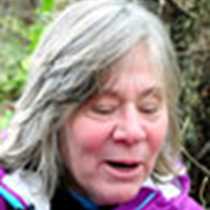Islas Carmen & Danzante
On the northwest side of Isla Carmen is a small cove called Puerto Ballandra. Nearly circular in shape and ringed by tumbled red-rock volcanic hills, the cove can provide protection from the wind. Yesterday’s flat calm seas have been transformed by a northerly into whitecaps and windstreaks, offering us the opportunity to do some exploring by land and near the shore.
Kayakers paddled the edges of the cove, reporting sightings of American oystercatchers and algae grazing Sally Lightfoot crabs. On the shore, beachwalkers combed through a litter of fish bones and shells that offered stories of unusual creatures that had met some interesting end. Snorkelers swam with dozens of brightly colored king angels, panamic sergeant majors, flag cabrilla and the large Cortez angel.
By lunchtime, the winds had freshened and it was time to move to an even more secure anchorage. Departing Puerto Ballandra was a grand roller coaster ride enjoyed by everyone brave enough to head for the bow, and soon we were tucked behind Isla Danzante and ashore once again for a beautiful late afternoon walk. A highlight for many was the five-foot long Baja California coachwhip snake (masticophis fuliginosus) coiled a few feet above the ground in a limberbush shrub. Coachwhips are highly active, aggressive, diurnal predators that commonly feed on lizards, small snakes, birds and small mammals. This one also tried to feed on Justin, our Undersea Specialist and reptile guy.
Just before sunset, National Geographic biologist and film-maker Soames Summerhays presented a captivating film about what drives ocean ecosystems. It offers us much food for thought and further discussion on the current status of large ocean species.
On the northwest side of Isla Carmen is a small cove called Puerto Ballandra. Nearly circular in shape and ringed by tumbled red-rock volcanic hills, the cove can provide protection from the wind. Yesterday’s flat calm seas have been transformed by a northerly into whitecaps and windstreaks, offering us the opportunity to do some exploring by land and near the shore.
Kayakers paddled the edges of the cove, reporting sightings of American oystercatchers and algae grazing Sally Lightfoot crabs. On the shore, beachwalkers combed through a litter of fish bones and shells that offered stories of unusual creatures that had met some interesting end. Snorkelers swam with dozens of brightly colored king angels, panamic sergeant majors, flag cabrilla and the large Cortez angel.
By lunchtime, the winds had freshened and it was time to move to an even more secure anchorage. Departing Puerto Ballandra was a grand roller coaster ride enjoyed by everyone brave enough to head for the bow, and soon we were tucked behind Isla Danzante and ashore once again for a beautiful late afternoon walk. A highlight for many was the five-foot long Baja California coachwhip snake (masticophis fuliginosus) coiled a few feet above the ground in a limberbush shrub. Coachwhips are highly active, aggressive, diurnal predators that commonly feed on lizards, small snakes, birds and small mammals. This one also tried to feed on Justin, our Undersea Specialist and reptile guy.
Just before sunset, National Geographic biologist and film-maker Soames Summerhays presented a captivating film about what drives ocean ecosystems. It offers us much food for thought and further discussion on the current status of large ocean species.




